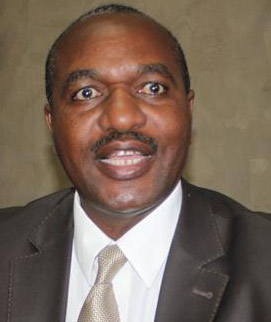
Exploration of ‘battery minerals’ positive for local mining sector – Chamber Of Mines

The Chamber of Mines CEO, Veston Malango, said that the outlook for the mining industry is positive with several new players targeting a larger array of minerals and noted that these developments widen the opportunities for investment, job creation and broadening of the value chain.
Malango said this at the launch of the 7th Namibian Mining Expo and Conference which will take place in Windhoek on 25 and 26 April.
“In terms of outlook, we are extremely positive with the recent uptick in commodity prices, especially for base metals and minerals that have recently been coined battery minerals. These include lithium, graphite, rare earths and cobalt, among others,” Malango added.
He stressed that the surge in prices for such commodities is being driven by electric vehicles and renewable energy storage technologies, while improving global growth is also driving demand for commodities.
“The outlook for exploration especially for these minerals, is particularly positive as evidenced by the increase in such activity and new projects in 2017,” Malango said.
The most notable projects to date have been Desert Lion lithium project near Karibib, Gecko Opuwo Cobalt project, Namibia Rare Earths projects and the Namib Lead and Zinc mine near Swakopmund which is currently progressing with mine development. Another highlight on the Chamber’s calendar was first production from the Okandjande graphite mine in April 2017.
“We have heard the call by the government on the need for value addition in the mining industry. Although we maintain that we are miners and not manufacturers, the extraction of these minerals potentially opens new value chains for Namibia. These markets can and should be explored further. As stakeholders we must be proactive where possible in unlocking such opportunities for Namibia,” Malango stressed.
Furthermore, Malango stressed that the sector will continue to look for upstream value addition and local procurement opportunities, while continuing to engage with Government on how best to diversify local content and ownership in the sector.
“We have consistently engaged Government on NIPA in 2017 and additional conditions to licences. We are also positive that the final version of NEEEF will address concerns and issues raised by various sectors of the private sector and civil society. Continuous engagement and constructive collaboration between the Chamber and Government will most certainly help Namibia to regain its position as the top destination for mining investment in Africa,” he added.
Even though the uranium price continues to be depressed, the Chamber of Mines is optimistic about the industry’s prospects, pointing out that mining contribution to GDP is expected to increase over the next few years.
The sector directly employs approximately 16,000 people and given a mining multiplier of seven, mining directly contributes to the livelihood of 112,000 Namibians. Namibian artisans also undergo continuous training to develop their skills set, becoming a sought-after commodity on the continent, with Namibian mining artisans and professionals working as expats in countries such as Mali.
This year’s Mining Expo and Conference will feature an exhibition by mining companies and suppliers, along with representatives and players from the energy sector. The conference programme will feature speakers from a variety of stakeholders, specifically focusing on topics that explore ways on how the sector can continue to maximise benefits to the Namibian economy in all areas.














































